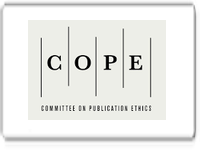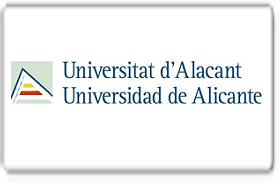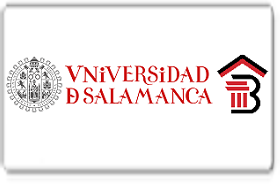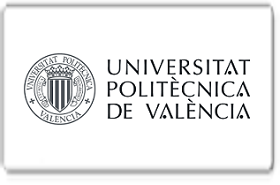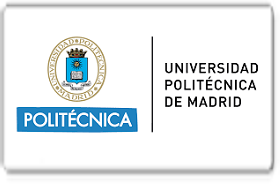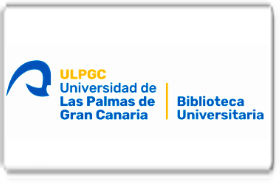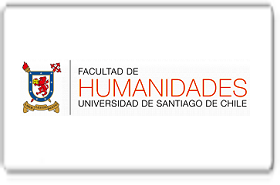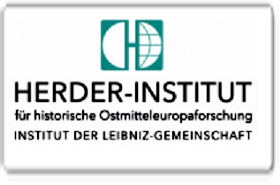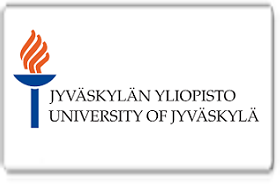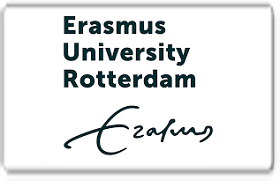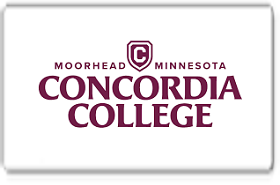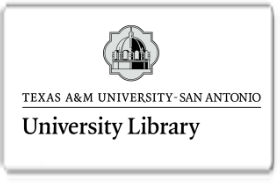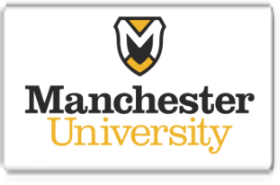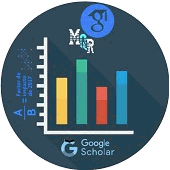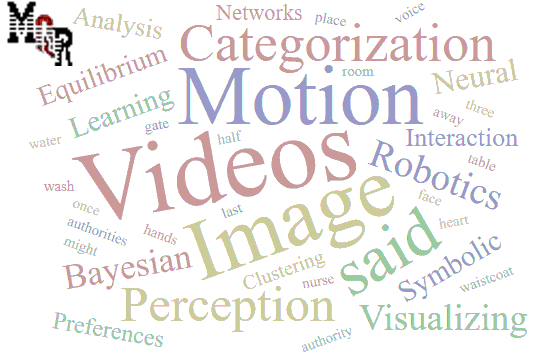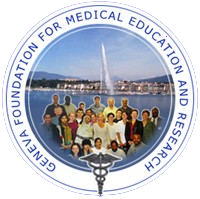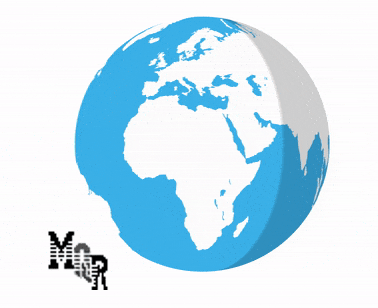Incompatibilidad de anticuerpos eritrocitarios y su importancia en el diagnóstico inmunohematológico de anemias hemolíticas
DOI:
https://doi.org/10.56048/MQR20225.8.1.2024.1610-1631Palabras clave:
Autoanticuerpos; Autoinmune; Transfusión sanguínea; Antiglobulina; AloinmunizaciónResumen
La anemia hemolítica autoinmune es producto de la destrucción de los hematíes a causa de que el organismo actúa formando anticuerpos específicos contra antígenos de sus propios eritrocitos, a pesar de ser un tipo de anemia poco común, es importante realizar un diagnóstico a tiempo. Los anticuerpos irregulares son aquellas proteínas naturales que pueden ocurrir como resultado de la exposición a antígenos de glóbulos rojos extraños por trasplante, transfusión o incompatibilidad materno-fetal. El objetivo del estudio fue analizar incompatibilidad de anticuerpos eritrocitarios y la importancia en el diagnóstico inmunohematológico de anemias hemolíticas. Se utilizó un diseño documental de tipo descriptivo, basado en la revisión sistemática de información. Los artículos fueron obtenidos de las bases de datos Scielo, PubMed, NCBI, Dialnet, Redalyc, Springer y Google académico. Los resultados mostraron que los síntomas clínicos y parámetros evaluados en pacientes diagnosticados con anemia fue más frecuente la ictericia como característica clínica asociada al aumento de bilirrubina. Se evidenció la presencia de anticuerpos irregulares desencadenantes de anemias hemolíticas, los más frecuentes fueron: el sistema Kell y Rhesus, para la detección de este trastorno autoinmune prevalecieron las técnicas inmunohematológicas de antiglobulina directa e indirecta para su detección, mientras que para su identificación predominaron los paneles celulares. Las complicaciones más destacadas en la anemia hemolítica fueron las coagulopatías causantes de varios decesos que han contribuido al aumento del índice de mortalidad en distintos territorios.
Descargas
Métricas
Cited
DOI: 10.56048![]()
Citas
Caicedo G, Ortega F. Frecuencia e identificación de anticuerpos irregulares en pacientes politransfundidos en el hospital de especialidades Eugenio Espejo entre el 2018 y 2020. Ciencia Latina Revista Científica Multidisciplinar. 2023; 7(1): p. 1503-1513.
Gabelli M, Ademokun C, Cooper N, Amrolia P. Pathogenesis, risk factors and therapeutic options for autoimmune haemolytic anaemia in the post-transplant setting. British Journal of Haematology. 2022; 196(1): p. 45-62.
Crespo F, Hernández S, Gómez I, Medina C, García A. Anemia hemolítica autoinmune: una visión actual desde la inmunopatogenia hasta el tratamiento. Gaceta Médica De Caracas. 2023; 131(1): p. 142-158.
Quiros I, Rodríguez M, Valerín A, Campbell D, Zumbado G. Frecuencias de grupos sanguíneos de interés clínico en donantes y pacientes de Costa Rica. Revista Cubana de Hematología, Inmunología y Hemoterapia. 2020; 36(2): p. 1-13.
Amaral D, Lima L, Alves G, Goncales J, Silva K. Faixa etária de mulheres com anticorpos irregulares antieritrocitários no laboratório municipal de saúde pública de Recife. Hematology, Transfusion and Cell Therapy. 2021; 43(1): p. S391.
Ulloa A, Crespo C, Chiriboga R. Prevalencia de anticuerpos anti-eritrocitarios en donantes voluntarios de sangre Ecuatorianos. Acta bioquímica clínica latinoamericana. 2019; 53(3): p. 323-330.
Goyes M, Novillo J, Casa C, Zabala K. Incompatibilidad ABO. Una revisión bibliográfica. Rev. Anatomía nacional. 2020; 5(4): p. 160-174.
Jiménez M, Contreras M, González M, López C, Torres A, Urbina E. Incompatibilidad ABO en el trasplante de células progenitoras hematopoyéticas y sus complicaciones. Rev Med Inst Mex Seguro Soc. 2023; 61(1): p. 12-18.
Castillo M. Principales anticuerpos involucrados en la incompatibilidad sanguínea en México, de la estadística a la resolución. Rev Mex Med Transfus. 2022; 14(1): p. 27-29.
Alcocer S, Donoso A, Pinela M, Zamora F. Anemia hemolítica autoinmune: Una actualización. Dominio de las Ciencias. 2021; 7(2): p. 1467-1486.
Maldonado M, Toro C. Anemias hemolíticas autoinmunes, diagnóstico y tratamiento. Revista Hematología. 2020; 24(1): p. 70–80.
Hernández J, Fortún A, Campo M. Fundamentos fisiopatológicos para el diagnóstico de la anemia hemolítica autoinmune. Rev. Ciencias Médicas. 2019; 23(5): p. 745-757.
Cubas S, Ibarra E. Diseño e implementación de algoritmo para la asignación de estaciones de trabajo con metodologia de tarjetas con gel para pruebas inmunohematológicas. Gente Clave. 2019; 3(2): p. 9-25.
Mancilla R, Soto J. Estudio retrospectivo para el rastreo de anticuerpos irregulares a donadoras en Banco Central de Sangre del Centro Médico Nacional «La Raza». Rev Mex Med Transfus. 2019; 12(1): p. 6-11.
Monteagudo C, Rodríguez M, García U, Hernández B. Método cubano para determinar el porcentaje calculado de anticuerpos reactivos contra panel. Revista Cubana de Hematología, Inmunol y Hemoter. 2018; 34(3): p. 41-43.
Avanzas P, Bayes-Genis A, Pérez de Isla L, Sanchis J, Heras M. Ethical Considerations in the Publication of Scientific Articles. Revista Española de Cardiología. 2011; 64(5): p. 427–429.
Hernandez A, Anguiano V, Carmona C, Rodriguez S, Allan P, Lopez X, et al. Warm autoimmune hemolytic anemia: experience from a single referral center in Mexico City. Blood Res. 2017; 52(1): p. 44-49.
Yarali N, Arman O, Yazal A, Culha V, Kara A, Ozbek N. Clinical features and treatment of primary autoimmune hemolytic anemia in childhood. Transfusion and Apheresis Science. 2018; 57(1): p. 665-668.
Palmezano J, Figueroa C, Amaya R, Ruiz E, Hurtado A, Corredor K, et al. Determinación de las variables clínicas, paraclínicas y terapéuticas de los pacientes con anemia hemolítica autoinmune en un hospital de alta complejidad. Rev. Medicina (Bogotá). 2018; 40(1): p. 99-100.
Sekhar S, Chakrabarty R, Zaman R. Immunohematological and clinical characterizations of mixed autoimmune hemolytic anemia. Asian J Transfus Sci. 2018; 12(2): p. 99-104.
Sánchez N, Zubicaray J, Sebastian E, Gálvez E, Sevilla J. Anemia hemolítica autoinmune: revisión de casos. Anales de pediatría. 2020; 3(2): p. 1-7.
Umme H, Anam I, Farwa S, Ghazala T, Sabeen F. Causes of autoimmune hemolytic anemia and its clinical presentation. The Professional Medical Journal. 2020; 27(4): p. 831-835.
Boyadjian M. Acute hemolytic anemia caused by G6PD deficiency in children in Mayotte: a frequent and severe complication. Life Sciences. 2020; 44(7): p. 363-368.
Shim Y, Jung H, Shin H, Kang H, Choi J, Hah J, et al. Epidemiological Study of Hereditary Hemolytic Anemia in the Korean Pediatric Population during 1997–2016: a Nationwide Retrospective Cohort Study. Korean Med Sci. 2020; 35(33): p. e279.
Vinod P, Amanta L, Anad P. Autoimmune Hemolytic Anemia in Children: Clinical Profile and Outcomes. Journal of Applied Hematology. 2021; 12(4): p. 232-235.
Arora S, Dua S, Radhakrishnan N, Singh S, Madan J, Nath D. Autoimmune hemolytic anemia in children: Clinical presentation and treatment outcome. Asian J Transfus Sci. 2021; 15(2): p. 160-165.
Krushna R, Mishra D, Kumar R, Mahapatra S, Palai S, Abhishek A. Clinical Profile and Severity of Hemolysis in Adult Patients of Primary Autoimmune Hemolytic Anemia and Their Response to Steroid: A Prospective Cohort Study from Single Institution. Indian J Hematol Blood Transfus. 2021; 37(1): p. 119-125.
Sekhar S, Chakrapani A, Bhattacharya S, Nath R, Safi M. Immunohematological and Clinical Characterization of Complement and Non-Complement Associated Warm Autoimmune Haemolytic Anemia and Risk Factors Predicting their Occurrences. Indian J Hematol Blood Transfus. 2021; 37(4): p. 623-631.
Fan J, He H, Zhao W, Wang Y, Lu J, Li J, et al. Clinical Features and Treatment Outcomes of Childhood Analysis of 68 Cases. J Pediatr Hematol Oncol. 2016; 38(2): p. e50-e55.
Hussain A, Kanth A, Wani K, Wani K, Jan M, Sultan U. Clinicoetiological study of hemolitic anaemia in children presenting to a tertiary care hospital Ofkashmir. International Journal of Advanced Research (IJAR). 2023; 11(05): p. 1293-1298.
Abdel A, Tarek S, Magdi A, Shafik E. Autoimmune Hemolytic Anemia in the Pediatric Age Group: The Egyptian Experience. Annals of Hematology. 2023; 102(1): p. 1687–1694.
Altuntas N, Yenicesu I, Himmetoglu O, Kulali F, Kazanci E, Unal S, et al. The risk assessment study for hemolytic disease of the fetus and newborn in a University Hospital in Turkey. Transfusion and Apheresis Science. 2013; 48(3): p. 377–380.
Min-Joong J, Duck C, Kyoung-Un P, Mark Y, Myung-Geun S, Jong-Hee S, et al. Autoantibodies with mimicking specificity detected by the dilution technique in patients with warm autoantibodies. Ann Lab Med. 2013; 33(5): p. 343-348.
Abdel I, Mohamed H, Habashy D. Prevalence of red cell allo-antibodies among muti-transfused autoimmune hemolytic anemia Egyptian patients. J Appl Hematol. 2014; 5(3): p. 96-100.
Pal M, Williams B. Prevalence of maternal red cell alloimmunisation: a population study rom Queensland, Australia. Pathology. 2015; 47(2): p. 151–155.
Wang M, Wang W, Abeywardane A, Adikarama M, McLornan D, Raj K, et al. Autoimmune Hemolytic Anemia after Allogeneic Hematopoietic Stem Cell Transplantation: Analysis of 533 Adult Patients Who Underwent Transplantation at King’s College Hospital. Biology of Blood and Marrow Transplantation. 2015; 21(1): p. 60-66.
Schonewille H, Prinsen K, Reijnart M, De Watering L, Zwaginga J, Meerman R, et al. Extended matched intrauterine transfusions reduce maternal Duffy, Kidd, and S antibody formation. Transfusion. 2015; 55(12): p. 2912-2919.
Markham K, Rossi K, Nagaraja H, O’shaughnessy R. Hemolytic disease of the fetus and newborn due to multiple maternal antibodies. American Journal of Obstetrics and Gynecology. 2015; 213(1): p. 68.e1-68.e5.
Kristinsdóttir P, Kjartansson S, Haroardottir H, Jónsson P, Margrét A. Mótefni bundin við rauðkorn nýbura; orsakir og klínískar afleiðingar - Tilfelli greind í Blóðbankanum 2005-2012. LÆKNAblaðið. 2016; 7(8): p. 326-331.
Slootweg Y, Lindenburg I, Koelewijn B, Van I, Oepkes D, De haas M. Predicting anti-Kell-mediated hemolytic disease of the fetus and newborn: diagnostic accuracy of laboratory management. American journal of obstetrics and gynecology. 2018; 219(4): p. 393.e1-393.e8.
Lozar J, Vidakovic M, Soltirovska A. Hemolitična bolezen ploda in novorojenčka; pregledni članek in značilnosti bolnikov, hospitaliziranih na Kliničnem oddelku za neonatologijo med letoma 2007 in 2016. Pregledni znanstveni članek. 2018; 87(9): p. 405-416.
Emam N, Ezzelarab S, Hassan N, Saeyed H, Nahih N, Hamed G. Comparative study between different alloadsorption techniques in warm autoimmune hemolytic anemia. Egypt J Haematol. 2021; 46(2): p. 105-110.
Routray S, Behera R, Mallick B, Acharya D, Sahoo J, Kanungo G, et al. The spectrum of hemolytic disease of the newborn: Evaluating the etiology of unconjugated hyperbilirubinemia among neonates pertinent to immunohematological workup. Cureus. 2021; 13(8): p. e16940.
Furuseth M, Alme C, Garvik L, Hellebostad M, Bechensteen A, Akkök Ç. Alloimmunization in transfused patients with constitutional anemias in Norway. Transfusion and Apheresis Science. 2021; 60(5): p. e103257.
Tariq F, Ahmed R, Ashfaq J, Thakur W, Ashique A, Borhany M. Frequency of extended red cell antigen phenotype among patients of hematological diseases: A single center study. Cureus. 2022; 14(7): p. e27215.
Sevuk S, Bozkurt A. Neonatal hemolytic disease: How should we use indirect and direct antiglobulin tests? Pediatrics & Neonatology. 2023; 30(40): p. 1-6.
Barcellini W, Fattizzo B, Zaninoni A, Radice T, Nichele I, Di Bona E, et al. Clinical heterogeneity and predictors of outcome in primary autoimmune hemolytic anemia: a GIMEMA study of 308 patients. Blood. 2014; 124(19): p. 2930–2936.
Lafarge A, Bertinchamp R, Pichereau C, Valade S, Chermak A, Teodosis I, et al. Prognosis of autoimmune hemolytic anemia in critically ill patients. Annals of hematology. 2019; 98(3): p. 589-594.
Audia S, Bach B, Samson M, Lakomy D, Baptiste J, Burlet B, et al. Venous thromboembolic events during warm autoimmune hemolytic anemia. PloS one. 2018; 13(11): p. e0207218.
Morbieu C, Leblanc T, Malphette M, Petitditdier C, Durin J, Haioun C, et al. Characteristics and Outcome of DAT-Negative Autoimmune Hemolytic. Blood. 2018; 132(1): p. 3619.
Yilmaz F, Kiper D, Koc M, Karsli T, Kilinc M, Gediz F, et al. Clinical Features and Treatment Outcomes of Warm Autoimmune Hemolytic Anemia: A Retrospective Analysis of 60 Turkish Patients. Indian J Hematol Blood Transfus. 2019; 35(3): p. 523-530.
Gutiérrez I, López M, Morado M, Arrizabalaga B, Iglesia S, Beneitez D, et al. Anemias hemolíticas autoinmunes: estudio retrospectivo de 93 pacientes. Medicina Clínica. 2019; 154(9): p. 331–337.
Weli M, Hlimaa B, Belhadjb R, Maaleja B, Elleucha A, Mekki N, et al. Diagnosis and management of autoimmune hemolytic anemia in children. Transfusion clinique et biologique : journal de la Societe francaise de transfusion sanguine. 2020; 27(2): p. 61-64.
Barcellini , Fattizzo B, Giannotta J, Zaninoni A, Kulasekararaj A, Cro L, et al. Small Paroxysmal Nocturnal Hemoglobinuria Clones in Autoimmune Hemolytic Anemia: Clinical Implications and Different Cytokine Patterns in Positive and Negative Patients. Front Immunol. 2020; 11(1): p. 1-7.
Lund D, Moller S, Frederiksen H. Survival in autoimmune hemolytic anemia remains poor, results from a nationwide cohort with 37 years of follow-up. Eur J Haematol. 2022; 109(1): p. 10-20.
Tabita D, Daskalakis M, Mansouri B, Rovo A, Zeerleder S. Thromboembolic complications in autoimmune hemolytic anemia: Retrospective study. Eur J Haematol. 2022; 108(1): p. 45-51.
Kuter D, Rogers K, Boxer M, Choi M, Agajanian R, Arnold D, et al. Fostamatinib for the treatment of warm antibody autoimmune hemolytic anemia: Phase 2, multicenter, open-label study. American Journal of Hematology. 2022; 97(6): p. 691-699.
Fattizzo B, Bortolotti M, Giannotta J, Zaninoni A, Consonni D, Barcellini W. Intravascular hemolysis and multitreatment predict thrombosis in patients with autoimmune hemolytic anemia. The Journal of Thrombosis and haemostasis. 2022; 20(8): p. 1852-1858.
Yuan J, Liang Z, Dong Y, Ren H. Autoimmune Hemolytic Anemia After Cord Blood Transplantation: A Retrospective Single-Center Experience. J Inflamm Res. 2023; 16(1): p. 1-6.
Rangnekar A, Shenoy S, Mahabala C, Balanthimogru P. Impact of baseline fluorescent antinuclear antibody positivity on the clinical outcome of patients with primary autoimmune hemolytic anemia. Hematology, Transfusion and Cell Therapy. 2023; 45(2): p. 204–210.
Higuchi T, Hoshi T, Toriyama M, Nakajima A, Haruki K. Infrequent Thrombotic Complications in Japanese Patients with Warm Autoimmune Hemolytic Anemia. Intern Med. 2023; 62(10): p. 1441-1447.
Orphanet. www.orpha.net. [Online]; 2020. Acceso 08 de 08de 2023. Disponible en: https://www.orpha.net/consor/cgi-bin/Disease_Search.php?data_id=23490&lng=en.
Haute Autorité de Santé. www.has-sante.fr. [Online]; 2017. Acceso 08 de 08de 2023. Disponible en: https://www.has-sante.fr/jcms/c_2747976/fr/anemie-hemolytique-auto-immune-de-l-enfant-et-de-l-adulte.
Kumbha M, Sodalagunta M, Nataraju A, Bangalore S, Thejaswi K, Deepak R, et al. Warm Autoimmune Hemolytic Anemia: Clinical Profile and Management. J Hematol. 2017; 6(1): p. 12-20.
Gil M, García M, Arias L, Romero A, Cristo V. Caracterización clínica y de laboratorio de la anemia hemolítica autoinmune: estudio retrospectivo de 15 casos. Revista Cubana de Hematol, Inmunol y Hemoter. 2015; 31(4): p. 426-433.
Uwizeyimana G, Ally M, Yonazzi M, Chamba C, Nasser A, Luzzatto L. Immune Hemolytic Anemia in Patients with Lymphoid Malignancy in Tanzania. Research Square. 2022; 2(1): p. 1-15.
Rahimi N, Chezar J, Yahalom V. Red blood cell alloimmunization prevalence and hemolytic disease of the fetus and newborn in Israel: A retrospective study. Transfusion. 2020; 60(11): p. 2684-2690.
Bollason G, Hjartardottir H, Jonsson T, Gudmundsson S, Kjartansson S, Halldorsdottir A. Red blood cell alloimmunization in pregnancy during the years 1996-2015 in Iceland: a nation-wide population study. Tranfusion. 2017; 57(11): p. 2578–2585.
Jaime J, Aguilar P, Salazar L, Gómez A, Gómez D. Tratamiento de la anemia hemolítica autoinmune: datos reales de un centro de referencia en México. Blood Res. 2019; 54(2): p. 131-136.
Sankaran J, Rodriguez V, Eapen J, Kreuter J, Go R. Autoimmune Hemolytic Anemia in Children: Mayo Clinic Experience. J Pediatr Hematol Oncol. 2016; 38(6): p. e120-e124.
Rattarittamrong E, Eiamprapai P, Tantiworawit A, Rattanathammethee T, Hantrakool S, Chai C, et al. Clinical characteristics and long-term outcomes of warm-type autoimmune hemolytic anemia. Hematology. 2016; 21(6): p. 368-374.
Toro L, Jaramillo P. Caracterización de la anemia hemolítica autoinmune y utilidad de la prueba de antiglobulina directa monoespecífica en el diagnóstico. Revista Hematologia. 2020; 24(2): p. 55-64.
Publicado
Cómo citar
Número
Sección
Categorías
Licencia

Esta obra está bajo una licencia internacional Creative Commons Atribución 4.0.
Los autores se comprometen a respetar la información académica de otros autores, y a ceder los derechos de autor a la Revista MQRInvestigar, para que el artículo pueda ser editado, publicado y distribuido. El contenido de los artículos científicos y de las publicaciones que aparecen en la revista es responsabilidad exclusiva de sus autores. La distribución de los artículos publicados se realiza bajo una licencia 


















